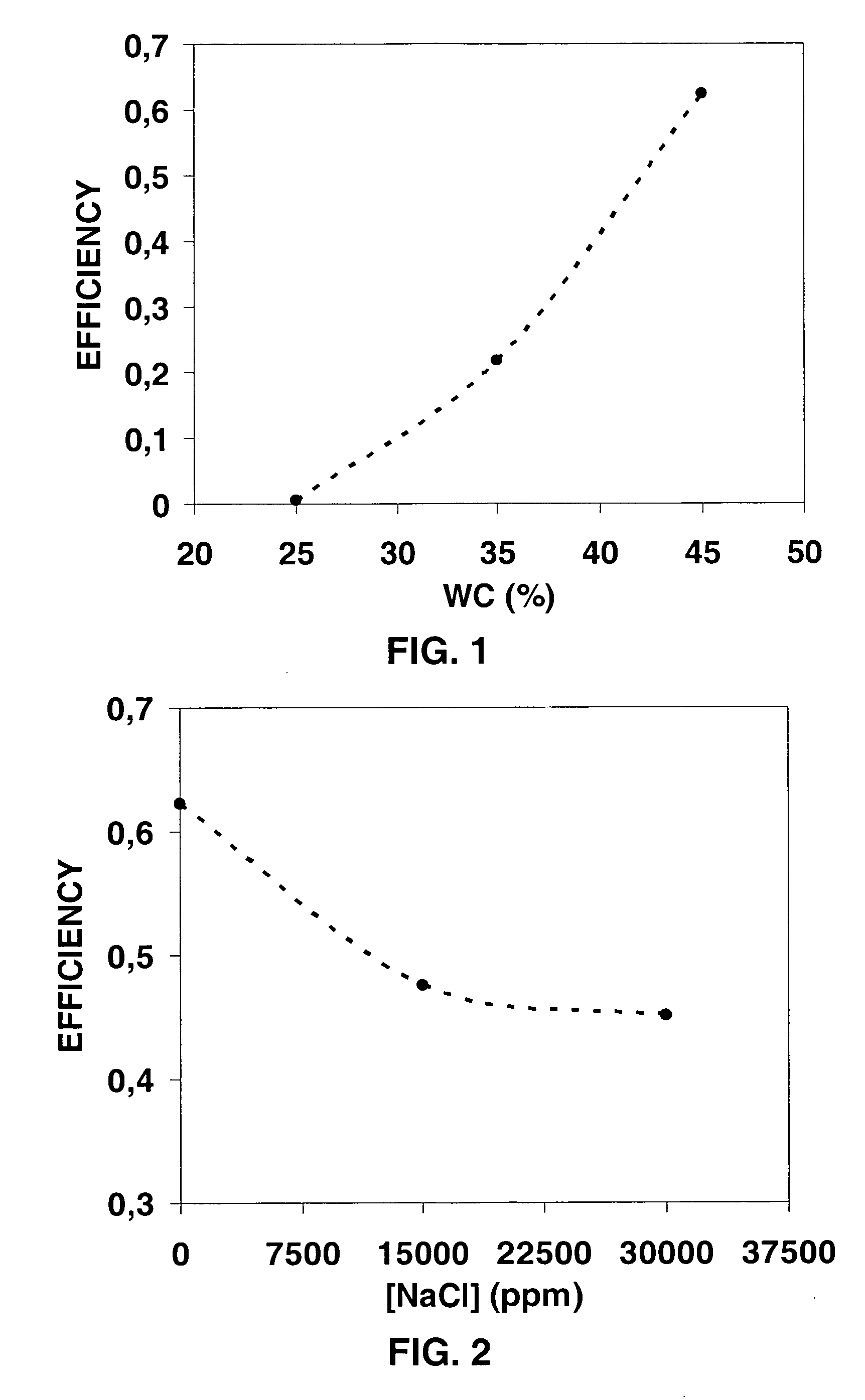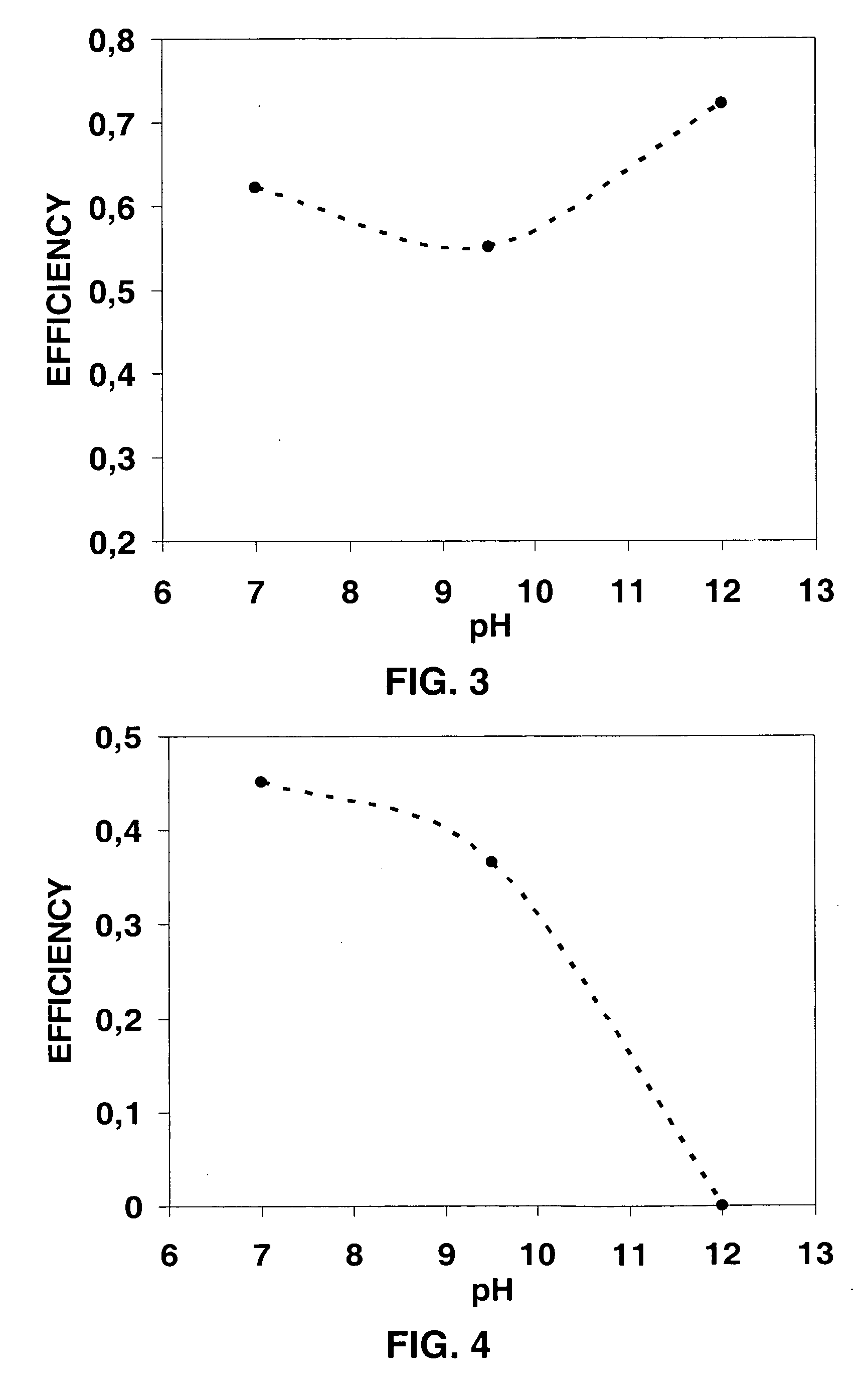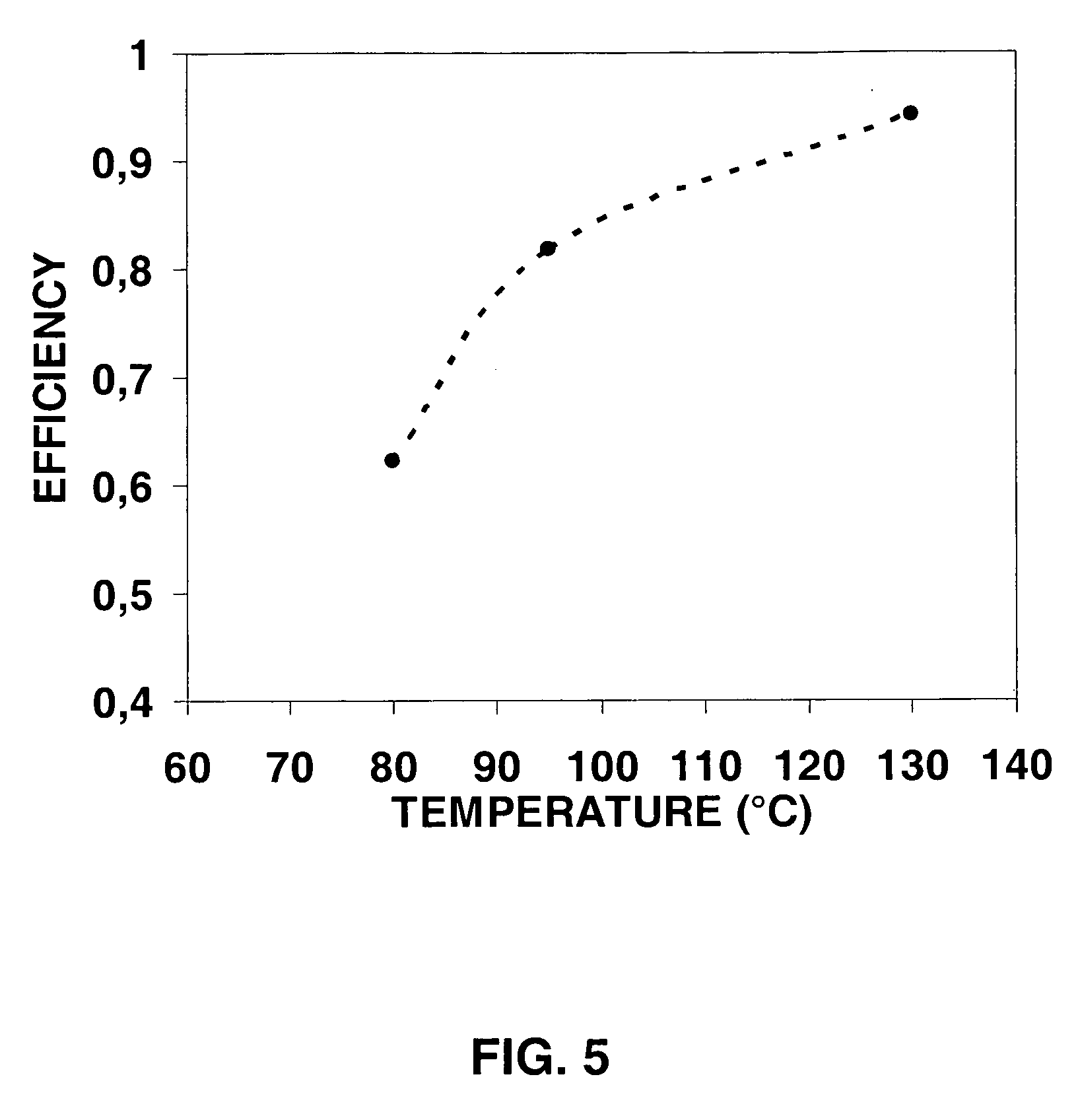Method for the microwave treatment of water-in-oil emulsions
a technology of water in oil and emulsion, which is applied in the direction of non-miscible liquid separation, separation process, chemistry apparatus and processes, etc., can solve the problems of hard work, excessive time-consuming procedures, water emulsion nature, etc., and achieve high separation efficiency of the aqueous phase and low energy consumption
- Summary
- Abstract
- Description
- Claims
- Application Information
AI Technical Summary
Benefits of technology
Problems solved by technology
Method used
Image
Examples
example
Preparation of the Emulsion
[0070]Water-in-oil emulsions are prepared through homogenization of known amounts of 19.1°API heavy crude oil as well as model brine solutions containing specified amounts of NaCl and NaOH in order to adjust the salt contents and pH values of the emulsions aqueous phase. The alkaline solution consists of aqueous 0.07 wt % NaOH.
[0071]The features of this oil are summarized in Table 1 below.
TABLE 1Crude oil PropertiesDensity, °API19.1WC, wt % (a)0.76Asphaltene content, wt % (b)2.95Viscosity at 30° C., cP290TAN, mg KOH / g crude oil (c)1.32Salinity, mg NaCl / L crude oil279(a) WC means water content (% w / w) in the admixture.(b) Defined as the oil fraction containing n-heptane insolubles(c) TAN means total acid number
[0072]The emulsion synthesis procedure can involve several stages, such as for example pre-emulsification and emulsification stages. During pre-emulsification, a known amount of aqueous solution is added by increments to the oleaginous phase while the...
PUM
 Login to View More
Login to View More Abstract
Description
Claims
Application Information
 Login to View More
Login to View More - R&D
- Intellectual Property
- Life Sciences
- Materials
- Tech Scout
- Unparalleled Data Quality
- Higher Quality Content
- 60% Fewer Hallucinations
Browse by: Latest US Patents, China's latest patents, Technical Efficacy Thesaurus, Application Domain, Technology Topic, Popular Technical Reports.
© 2025 PatSnap. All rights reserved.Legal|Privacy policy|Modern Slavery Act Transparency Statement|Sitemap|About US| Contact US: help@patsnap.com



